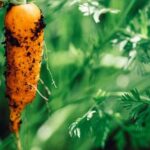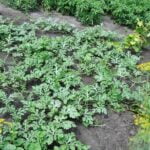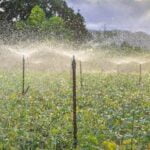Winter indoor gardening vegetables offer a rewarding opportunity to continue growing your own fresh produce even during the colder months. While winter brings its share of challenges for gardeners, including limited sunlight and colder temperatures, it is still possible to enjoy a thriving indoor garden with the right planning and care.
In this article, we will explore the benefits and challenges of winter indoor gardening, as well as provide valuable tips on selecting the best vegetables, setting up your indoor garden space, choosing containers and soil, watering and feeding your plants, preventing pests and diseases, harvesting your crops, and ultimately embracing the joy of growing your own fresh vegetables all year round.
Embracing winter indoor gardening comes with numerous benefits. Not only does it allow you to enjoy fresh homegrown produce during the coldest months when outdoor gardening may not be feasible, but it also provides a rewarding and therapeutic hobby during the winter season.
Additionally, growing vegetables indoors can help reduce grocery expenses while providing access to organic and nutritious greens that you have grown yourself. However, there are also some challenges to consider when embarking on winter indoor gardening, such as ensuring adequate lighting, managing temperature and humidity levels, and addressing potential pest infestations in an indoor environment.
To successfully grow vegetables indoors during the winter months, it is essential to create an ideal environment for your plants. This includes providing sufficient lighting through grow lights or natural sunlight exposure if available. Monitoring and regulating temperature and humidity levels are also key factors in promoting healthy growth.
Choosing the right containers and soil mixtures tailored to indoor gardening can make a significant difference in the success of your crops. By following these guidelines and implementing proper care practices for your winter indoor vegetable garden, you can cultivate a thriving harvest of fresh greens right in the comfort of your home.
Best Vegetables for Winter Indoor Gardening
When it comes to winter indoor gardening vegetables, there are several options that thrive in indoor settings. One popular choice is leafy greens like lettuce, spinach, and kale. These vegetables do well in containers and don’t require as much direct sunlight as some other plants. They also grow relatively quickly, allowing you to enjoy fresh greens throughout the winter months.
Another excellent option for winter indoor gardening vegetables is herbs like parsley, cilantro, and chives. These flavorful additions to your dishes can be grown easily indoors with sufficient light and water. Having fresh herbs on hand can elevate the taste of your meals during the colder months when outdoor herb gardens may not be flourishing.
Additionally, root vegetables such as carrots, radishes, and beets can also be successfully grown indoors during the winter. While they may take a bit longer to mature compared to outdoor gardens, these hearty vegetables can still be a rewarding addition to your indoor gardening endeavors. With the right conditions and care, you can enjoy harvesting your own homegrown root vegetables even when it’s cold outside.
| Vegetable | Benefits |
|---|---|
| Leafy Greens (lettuce, spinach, kale) | Grow well in containers, don’t require much sunlight |
| Herbs (parsley, cilantro, chives) | Can easily be grown indoors with proper care |
| Root Vegetables (carrots, radishes, beets) | Mature slower but can still thrive indoors |
Setting Up Your Indoor Garden Space
When it comes to setting up your indoor garden space for growing winter vegetables, proper lighting, temperature, and humidity are crucial factors to consider. Here are some key points to keep in mind for each aspect:
- Lighting: During the winter months when natural sunlight may be limited, providing artificial light is essential for the growth of your indoor vegetables. Choose full-spectrum grow lights that mimic natural sunlight to ensure your plants receive the necessary light for photosynthesis.
- Temperature: Most winter vegetables thrive in cool temperatures ranging from 55-75°F (13-24°C). It’s important to maintain a consistent temperature in your indoor garden space to promote healthy growth. Avoid placing plants near drafty windows or heating vents that could create temperature fluctuations.
- Humidity: Indoor environments tend to have lower humidity levels, which can impact the growth of winter vegetables. To increase humidity around your plants, mist them regularly with water or place a humidity tray filled with water near your garden. Monitor humidity levels with a hygrometer and adjust as needed.
Creating an ideal environment for your winter indoor gardening vegetables requires attention to detail and regular monitoring. By ensuring proper lighting, temperature, and humidity levels in your indoor garden space, you can provide the necessary conditions for your vegetables to thrive throughout the colder months.
In addition to maintaining optimal conditions, consider rotating plants periodically to provide even exposure to light and airflow. This can help prevent leggy growth and promote overall plant health. With a well-prepared indoor garden space, you’ll be on your way to enjoying a bountiful harvest of fresh homegrown winter vegetables in no time.
Choosing the Right Containers and Soil for Growing Vegetables Indoors
When it comes to winter indoor gardening vegetables, choosing the right containers and soil is crucial for the success of your crops. Selecting the appropriate containers will not only provide enough space for your vegetables to grow but also ensure proper drainage to prevent waterlogged roots.
Opt for containers that are at least 6-8 inches deep to allow room for root development. Fabric pots, plastic pots, or even recycled containers can be used as long as they have drainage holes at the bottom.
As for the soil, using a high-quality potting mix specifically formulated for indoor plants is essential. Avoid using garden soil as it can compact in containers and hinder drainage. Look for a lightweight mix that contains ingredients like peat moss, perlite, and vermiculite to retain moisture while providing good aeration. Remember to choose organic or all-natural soil mixes to avoid introducing harmful chemicals into your indoor vegetable garden.
Additionally, consider adding organic matter such as compost or worm castings to enrich the soil with nutrients essential for plant growth. Mix in some slow-release fertilizer to provide a steady supply of nutrients throughout the growing season.
Regularly check the moisture level of the soil and adjust watering accordingly to ensure that your winter indoor gardening vegetables have the optimal conditions for healthy growth and bountiful harvests. With the right containers and nutrient-rich soil, you are on your way to successfully growing fresh vegetables indoors during the winter months.
Watering and Feeding Your Winter Indoor Vegetable Garden
When it comes to winter indoor gardening vegetables, proper watering and feeding are essential to ensure healthy plant growth and a bountiful harvest. In the controlled environment of an indoor garden, it’s crucial to pay close attention to the needs of your plants to avoid issues such as nutrient deficiencies or waterlogged soil.
To help you navigate the watering and feeding process for your winter indoor vegetable garden, here are some key tips:
- Watering: One of the biggest mistakes indoor gardeners make is overwatering their plants. It’s important to allow the top inch of soil to dry out before watering again, as excessive moisture can lead to root rot. Using a moisture meter can help you determine when it’s time to water.
- Feeding: Indoor plants rely on you for their nutrients, so it’s crucial to provide them with a balanced fertilizer. Look for a water-soluble fertilizer specifically formulated for vegetables and follow the instructions on the label for application rates. Be cautious not to over-fertilize, as this can harm your plants.
- Monitoring: Keep an eye on your plants for signs of nutrient deficiencies, such as yellowing leaves or poor growth. Adjust your feeding schedule accordingly and consider supplementing with additional nutrients like calcium or magnesium if needed.
By maintaining a careful balance of watering and feeding in your winter indoor vegetable garden, you’ll set yourself up for success and enjoy a thriving crop of fresh homegrown produce throughout the cold season. Remember to regularly check on your plants’ health and make adjustments as necessary to ensure they reach their full potential.
Pests and Diseases
Preventative Measures
One of the best ways to combat pests and diseases in your winter indoor gardening vegetables is through prevention. Start by regularly inspecting your plants for any signs of trouble such as yellowing leaves, holes, or unusual spots. By catching issues early on, you can prevent them from spreading to the rest of the plants. Additionally, maintaining good air circulation around your plants can minimize the risk of fungal diseases.
Natural Remedies
When it comes to controlling pests and diseases in your indoor vegetable garden, consider using natural remedies instead of harsh chemicals. For example, introducing beneficial insects like ladybugs or lacewings can help keep pest populations in check. Neem oil or insecticidal soap are also effective options for dealing with common pests without harming your plants or yourself.
Quarantine Infected Plants
If you notice that one of your winter indoor gardening vegetables is struggling with pests or diseases, it’s essential to quarantine it immediately. This will prevent the issue from spreading to other plants in your indoor garden. You can isolate the affected plant in a separate room or area until you have successfully treated it and it is no longer a threat to the rest of your crops.
Harvesting and Using Your Fresh Homegrown Winter Vegetables
One of the most rewarding aspects of winter indoor gardening vegetables is the ability to harvest and use your fresh, homegrown produce. There is a sense of satisfaction in being able to pick vegetables from your own garden and incorporate them into delicious meals during the colder months. Not only does it provide you with a source of fresh, nutrient-rich foods, but it also gives you a sense of accomplishment and connection to the growing process.
Harvesting Techniques for Winter Indoor Vegetables
When it comes to harvesting your winter indoor vegetables, timing is key. Each vegetable has its own specific cues that indicate when it is ready to be picked. For example, leafy greens like kale and lettuce are best harvested when they are young and tender, while root vegetables like carrots and radishes should be harvested once they have reached their full size. Make sure to use clean, sharp scissors or gardening shears to avoid damaging the plants during harvest.
Utilizing Your Fresh Produce in the Kitchen
After harvesting your winter indoor vegetables, it’s time to put them to good use in the kitchen. Whether you are making a hearty soup, a crisp salad, or a flavorful stir-fry, incorporating your fresh produce into your meals can elevate the flavor and nutritional value of your dishes.
Experiment with different cooking methods and recipes to make the most out of your homegrown vegetables. By using what you have grown yourself, you can enjoy the freshest flavors and highest quality ingredients in every bite.
By embracing the joy of growing and harvesting your own winter indoor vegetables, you not only gain access to fresh produce during the colder months but also develop a deeper connection to nature and food. The gratification of nurturing plants from seedlings to full-grown crops and transforming them into delicious dishes is truly unmatched. So roll up your sleeves, tend to your indoor garden with care, and savor the fruits (or rather, veggies) of your labor all winter long.
Tips and Tricks for Success
When it comes to winter indoor gardening vegetables, starting from seed and successfully growing them to full harvest requires some tips and tricks to ensure a bountiful crop. One key aspect of success in indoor gardening is choosing the right seeds for the vegetables you want to grow. Opt for high-quality seeds from reputable sources to ensure better germination rates and healthier plants.
Another important tip for indoor vegetable gardening success is providing adequate lighting for your plants. Since natural sunlight may be limited during the winter months, investing in grow lights can help simulate the sun’s rays and promote healthy growth. Make sure to position the lights at the correct distance from your plants to prevent leggy growth or burning.
In addition to proper lighting, maintaining the right temperature and humidity levels in your indoor garden space is crucial for the health of your winter vegetables. Most vegetable crops thrive in temperatures between 60-75°F (15-24°C) during the day and slightly cooler at night. Monitor humidity levels as well, as overly dry air can lead to issues like leaf drop or pest infestations. Regularly check with a hygrometer to ensure optimal conditions for your plants’ growth.
| Key Tips for Success | Additional Information |
|---|---|
| Choose high-quality seeds | Ensure better germination rates and healthier plants |
| Provide adequate lighting | Invest in grow lights to simulate sunlight during winter months |
| Maintain proper temperature and humidity levels | Temperature range should be between 60-75°F during the day; monitor humidity with a hygrometer |
By following these tips and tricks, you can increase your chances of success with winter indoor gardening vegetables. From seed starting to full harvest, taking care of your plants’ needs will result in a rewarding experience of growing fresh produce even during the colder months. Remember to stay attentive to your plants’ requirements and adjust your care routine accordingly for a thriving indoor vegetable garden.
Conclusion
In conclusion, winter indoor gardening vegetables offer a rewarding and satisfying experience for those looking to continue their gardening passion even during the colder months. Despite the challenges that indoor gardening may present, the benefits of having fresh, homegrown produce at your fingertips make it all worthwhile. By choosing the right vegetables, creating an optimal growing environment, and diligently caring for your plants, you can enjoy a bountiful harvest throughout the winter season.
One key aspect to successful winter indoor gardening is setting up the right conditions for your plants to thrive. From providing adequate lighting and maintaining the proper temperature and humidity levels to selecting suitable containers and soil, every step plays a crucial role in ensuring the health and growth of your vegetable garden. Additionally, paying attention to watering schedules and nutrient needs will help promote strong, productive plants that yield an abundance of flavorful vegetables.
As you embark on your winter indoor gardening journey with vegetables, be sure to stay vigilant against pests and diseases that may affect your plants. By taking preventative measures and promptly addressing any issues that arise, you can protect your precious crops and enjoy a healthy harvest.
With dedication, perseverance, and a bit of green thumb know-how, you can embrace the joy of winter indoor gardening with vegetables year-round. Whether you are a seasoned gardener or just starting out, the satisfaction of growing your own fresh produce indoors during the winter months is truly unmatched.
Frequently Asked Questions
What Vegetables Can I Grow Indoors in Winter?
Growing vegetables indoors during the winter can be a great way to have fresh produce year-round. Some options to consider are leafy greens like spinach and kale, herbs such as parsley and cilantro, and root vegetables like radishes and carrots. These plants thrive in indoor conditions with enough light and proper care.
Can You Have an Indoor Garden in the Winter?
Yes, it is definitely possible to have an indoor garden during the winter months. With the right set up including grow lights, proper containers, and regular watering, you can successfully grow a variety of plants indoors even when it’s cold outside. Indoor gardens can bring some greenery and life into your home during the winter season.
What Can I Grow in My Indoor Garden in Cold Climates?
If you live in a cold climate, there are still plenty of options for what you can grow in your indoor garden during the winter. Plants like microgreens, dwarf citrus trees, and even certain varieties of tomatoes can do well indoors with the right conditions.
Consider utilizing grow lights or south-facing windows to provide enough light for your plants to thrive despite the colder temperatures outside.

If you’re looking to get into vegetable gardening, or are just looking for some tips on how to make your current garden better, then you’ve come to the right place! My name is Ethel and I have been gardening for years. In this blog, I’m going to share with you some of my best tips on how to create a successful vegetable garden.





